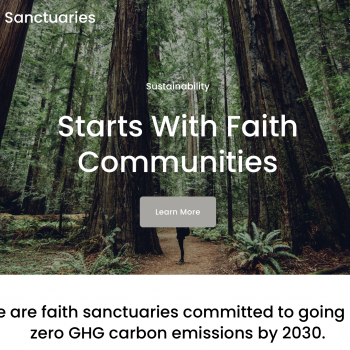So, you’d like your church to declare itself part of the new sanctuary network. You are ready to house an individual or family seeking sanctuary. What do you need to know?
Step One: Read A Little Bit
Read the go-to resource for sanctuary as an alternative to deportation, Church World Service’s web site sanctuarynotdeportation.org . There are a ton of great resources here, ways to participate broadly in the new sanctuary movement, in advocacy, actions, and more.
In particular, for all the practical details related to becoming a sanctuary congregation, read the toolkit they helpfully offer online.
Step Two: Know the Basics
“A Sanctuary Congregation is one that chooses to take prophetic action and protect people through various actions that range from housing immigrants in immediate danger of deportation to providing legal assistance, accompaniment to court, organizing alongside us, and much more. If you’re already doing some of this work, then you are a Sanctuary Congregation!” (LIRS United Sanctuaries of America)
The reason churches can offer sanctuary for undocumented people facing deportation is related to the sensitive locations memo from ICE. Churches provide sanctuary because they are especially protected. They also do it because typically a congregation can assembly volunteer resources to help with the needs of families in sanctuary.
You’ll want to engage your congregation in a discernment process in order to be ready to offer sanctuary. Each church and denomination is different, but typically it will be a conversation with the pastor, elected leadership, etc. in order to prepare.
You might want to make some practical preparations in the church building. Laundry facilities. Showers. A space for beds or mattresses.
Step Three: Build a Network
Many local sanctuary networks exist across the country, and you can learn from these, like the Sanctuary Downtown Seattle network, or the Austin Sanctuary Network. Once a small network of congregations are ready to publicly declare sanctuary, you can launch a simple resource, like these linked web site or Facebook pages. Host a press conference or other event to make it widely known which congregations are offering sanctuary, and that there is a wider network of support.
Church World Service also has a helpful handbook on building such networks.
Step Four: Make It Public
“Once you have brought a group of congregations together who are ready to make a pledge or sign onto a common statement you can bring together your new coalition for a public launch. This usually consists of a press conference and joint statement to publicize your pledge and dedication to accompany immigrants in working to stop deportations or create safe space for those whose civil rights are being violated” (CWS handbook)
Although there are many ways for individuals and congregations to participate in this network, it is grounded in a coalition of congregations who have pledged to provide sanctuary, together with all those who plan to support the network.
And you don’t have to have the church completely set up like a home to be ready for sanctuary. Some churches may just have a laundry facility, and kitchens, but no shower. Some are slowly getting a camp shower set up in a bathroom. Some the family is sleeping on an air mattress in a classroom.
Bottom line, sanctuary is a relationship established between the congregation and those seeking sanctuary, so there is a lot of space for diversity. Work on what is practical and meets needs.
Step Five: All Along, Connect With and Include Impacted Community Members
Although it is the churches who will provide direct sanctuary (and so pastor’s and councils or boards play a key role in planning), in your community there are many groups already working for immigrant rights, or lawyers providing legal services. Connect with these groups. Make sure their voices guide your actions and next steps.
“All this work begins by educating yourself and your congregation around immigration and social justice. Connect with impacted communities, immigrants’ rights groups and legal clinics in yourarea. Make sure immigrants and refugees are given space to lift up their voice and tell their stories and give input on strategy. Set up a leadership structure that ensures impacted leaders are part of the decision-making process. Find new ways to educate one another by talking to faith leaders who have already opened their church to offer Sanctuary and organizers who have helped start a coalition. Organize a training in your city on how to be part of the Sanctuary Movement. (CWS handbook)
Having listened, then take the bold step of publicly declaring sanctuary, and watch and see what God has in store.
Finally, added bonus, read this article about how sanctuary congregations are now housing immigrants, and not just sanctuary seeking ones, as a way to minister to immigrants in our communities.











